
 Instagram
Instagram
Related products
Acne: Definition, Types, Cause, Symptoms, Diagnosis, and Treatments


Related products
The Main 7 Types of Acne
Acne is a common skin condition that develops when the hair follicles become clogged with dead skin cells, debris, and sebum and become infected with bacteria or fungi. Clogging and infections result in the development of characteristic lesions like blackheads, whiteheads and pimples. It develops all over the body, including the face, back, shoulders, and chest, but it is more visible on the face and tarnishes cosmetic beauty. The clogging of pores with sebum and dead cells allows the opportunistic bacteria on the skin to grow, causing signs of inflammation like pain, heat, redness, and swelling.
People of all ages, races, and genders experience it. However, teenagers and younger adults are more susceptible. It is widespread, and 34.5% of people in the UK experience acne at some point in their life, and 11.5% of adults have acne at any time. Depending upon the differences in the skin type, the nature of the immune response, and causative factors, various types of acne lesions are observed, e.g., whiteheads, blackheads, pimples, blemishes, cysts, and modules. While the leading causes, i.e., the excessive production of sebum, excessive shedding of dead skin cells and infection by opportunistic pathogens, are the same, there are also many risk factors like age, hormonal fluctuations, age, use of certain medications, diets, stresses, allergic reactions, etc. Irrespective of the causes, risk factors and the presence or absence of specific lesions, it becomes a source of worry, particularly for youngsters.
What is Acne?
Acne (known as acne vulgaris) develops due to disturbances in the homeostasis between the hair follicles, skin pores, opportunistic pathogens, and skin glands.
The skin has sebaceous glands that are connected to the hair follicles. In normal skin, the sebum produced by the sebaceous glands is released on the skin surface through a pore which is the opening in the hair follicle. Keratinocytes are the specialized cells that line the hair follicles. During the shedding of dead skin cells, these keratinocytes are elevated to the skin surface. During acne, the keratinocytes, the sebum, and hairs remain stuck together in the pore, thus preventing the keratinocytes from being shed and thus inhibiting the sebum from reaching the skin surface. This situation creates an ideal condition for the bacteria on the skin to increase, causing infections and pimples.
What is another term for acne?
The medical term for acne is acne vulgaris. It is characterised by the mixed eruptions of non-inflammatory and inflammatory skin lesions and is different from modular or cystic acne. Depending upon the nature of skin lesions, various other names are also used, like zits, whiteheads, pizza face, rosacea, blackheads, blemishes, pimples, modules, cysts, and skin inflammation.
What is the classification of acne?
Classification of acne refers to categorising it into several types depending on the types of lesions, the nature of causative lesions, and the severity of the disease.
- Based on severity, it is divided into mild, with less than 30 total lesions; moderate, with 30-125 total lesions; and severe, with more than 125 total lesions.
- Based on causes, it is hormonal acne, fungal acne, mechanical acne, bacterial acne, comedonal acne, inflammatory acne, drug-induced acne, chemical acne, etc.
- Based on the types of lesions, it is cystic acne, nodular acne, papular acne, pustular acne, nodular acne and cystic acne.
How does acne develop?
It starts as very small comedones, the white or dark flesh-coloured bumps that develop on the skin, giving it a rough texture. The micro-comedones are very small to be seen; these comedones then turn into blackheads and whiteheads and become visible. The size of the comedones continues to increase, rupturing the hair follicle wall and causing inflammation. The deeper pores cause more pain and acne, causing cysts and modules to form.
Acne develops as a response to internal and external factors. The internal factors responsible are;
Inflammation: Many bacteria (like Cutibacterium acnes, Staphylococcus epidermitis and streptocossus) are present on the skin. These are the opportunistic bacteria that causes infections whenever possible and releases enzymes and waste products that cause inflammation at the local site.
Hyperkeratinization: It occurs when the dead cells in the hair follicles are not exfoliated and clog the pores by forming clumps.
Increased sebum production: It occurs due to the increased sensitivity of the sebaceous glands in the skin to the androgens.
Genetic factors: Various genetic factors are responsible for the type of skin, and the nature and production of sebum are inherited from the parents.
Similarly, various external factors also cause or exacerbate acne due to other factors. These are:
Sleep deprivation and stress: These factors increase cortisol levels and sebum production.
The use of some medications: Certain medications like anticonvulsants and steroids are also responsible for acne.
Exposure to sunlight and radiation: It causes the sebum to become oxidized, becoming more prone to form clogs.
Endocrine disturbances during pregnancy, diseases like polycystic ovarian syndrome (PCOS), etc.
Chemicals in the skincare products: The quality of skincare is pervasive as some chemicals in these products irritate the skin, causing inflammation and creating a conducive environment for acne development.
What are the different Types of Acne?
People experience different types of acne based on the causes and nature of the lesions. For example;
- Fungal acne (pityrosporum folliculitis), an excruciating and itchy type of acne due to the buildup of yeasts in the hair follicles,
- Cystic acne (in which pus-filled deep nodules and pimples form which leave a scar after healing)
- Nodular acne, a severe form of acne that causes pimples on the skin and nodular under the skin,
- Hormonal acne occurs particularly in young girls and boys due to hormonal changes.
- Acne mechanica occurs when the skin is exposed to extreme pressure, friction, and heat. It is often experienced due to the use of sports tools like baseball caps or helmets, and is referred to as sports-induced acne.
- Acne conglobata: In this condition, several interconnected and inflamed modules form under the skin, causing severe acne. It commonly affects the buttocks, arms, chest, and neck and leaves scars after healing. It is more common in males than females and often results from using testosterone or steroids.
- Acne cosmetic: This type of acne occurs due to allergic reactions to skin products like hair care products, moisturizers, and creams. It is a comedonal type of acne.
- Acne Rosacea: It is more common in adults above 30 years of age. It develops only on the face and is more common in women than men. The bumps and pimples form on the skin along with other signs like small blood vessels on the cheeks and nose and a flushed red face. Some factors like stress, drinking hot liquids, eating hot spicy foods, and exposure to chemicals and sunlight worsen it.
- Excoriated acne is a chronic form of acne, and people suffering from it experience more pimples than usual, even on healthy skin.
What Causes acne to appear?
Besides the role of sebum and hair follicles, several other factors also cause acute acne breakouts and exacerbate the acne due to other causes. These causes include hormonal imbalances, stress, higher cortisol levels, and unhealthy diets and junk foods.
Stress
Stress is experienced as the body responds to any challenge or demand perceived as a danger or threat. These triggers are psychological, emotional or physical. Many times, it is not the direct cause of acne; however, it results in severe acne due to other causes. It is the primary trigger in many cases and the main one in up to 82% of the patients, as noted by Dae Hun Suh, MD. Stress is responsible for occasional acne flare-ups, such as before an event, a date, a stressful work presentation, or a reunion. Stresses do so by altering the levels of certain hormones like cortisol and androgens.
These stress hormones are released during stress when the body shifts toward a fight or flight response. These hormones cause an increase in oil production by the oil glands and sweat by the sweat glands. Fear, anxiety, and stress also exacerbate the situation by increasing the production of cytokines, the inflammatory proteins which induce inflammation in the areas surrounding the sebaceous glands that produce the sebum. Stress also disrupts healthy habits, and a stressed person is more likely to eat abnormally or have sleep deprivation or poor quality sleep, worsening the situation. Some people often start smoking when facing stress or picking or scratching the skin, which won't help also.
Bacteria
Many bacteria live on intact skin and a healthy balance of these bacteria is essential for healthy skin. A disturbance of this balance has a role in the development of acne. Although many bacteria present on the skin cause acne, Cutibacterium acnes (previously called propionibacterium acnes) is a key player. It uses sebum as an energy source, and its presence and proliferation cause a local immune response and inflammation. However, it is present in the skin pores of people with and without acne; therefore, just presence is not the cause of acne, and some other risk factors should accumulate.
The researchers have found some strain differences in P. acnes in the people with and without acne and noted that the strains of P. acnes in the people who don't have acne have more abundance of genes involved in the metabolism, and these genes inhibited the colonization of harmful bacteria on the skin. On the other hand, the strains of P. acnes in the people who developed acne have more virulence-related genes. These genes cause more production of bacterial toxins that cause inflammation and acne. So, studying the composition of the bacterial community on the skin is necessary for more targeted therapy.
Besides these, many other commensal bacteria also become pathogens when the opportunity is provided and cause acne. These include Staphylococcus epidermidis, Staphylococcus aureus, Klebsiella pneumoniae, Cutibacterium granulosum, etc., which invade the infected tissues, causing some complications. However, it should be noted that the relationships and mechanisms of how these bacteria cause still need to be fully understood, and more research is needed to explore this relationship.
Diet
Food is not a direct cause of acne, but some foods help manage acne while others exacerbate the situation already present. Some foods influencing acne are;
Milk: People drinking more milk are more likely to develop acne. The reason needs to be clarified. However, it is supposed that some hormones in cow milk (mainly if she is pregnant) reach the human body through milk consumption, causing acne. Milk fat also increases the risk by influencing metabolism.
Sugary drinks: Sugary drinks and some carbohydrates rich juices increase the risk of acne. These include soft drinks, soda, cake, etc. These foods cause an increase in blood sugar levels. Bacteria use this sugar as food, and the hormonal activity to produce more insulin also disturbs the levels of other hormones.
Chocolate: Studies have noted that the risk of acne is higher in people who eat chocolate. The exact reason is unclear, but some chocolates are rich in milk and sugar. Dark chocolate with low milk and sugar is a better option. Dark chocolate is not safe for people with acne-prone skin as its 4-week average consumption exacerbated the situation in men with acne-prone skin in a study published in the International Journal of Dermatology in 2011.
Low-fibre foods: The exact cause is unknown, but more fibre in the diet reduces the risk of acne. Some experts relate it to the fact that high fibre in the diet helps to manage blood sugar levels which have important role development of acne. So, people using lower-fibre foods like pasta, white rice, dairy products, peanut butter, eggs, and tender meats, like poultry and fish, are likely to develop acne.
Oily foods: There is a myth in popular culture that eating oily foods causes acne. However, no link has been found between these two as such foods don't cause or worsen acne. However, oil from various sources, like a deep fryer, sometimes get to the skin and causes some skin problems by sticking to and clogging the pores.
Refined sugars and grains: The incidence of acne is high in people who consume more refined grains and sugars. Studies have found that high-sugar foods have a 54% more risk of causing acne. Exceptionally high-risk foods are sweetened beverages, sweeteners like honey, maple syrup, cane sugar, pasta prepared from white flour, rice noodles, white rice, desserts, cereals, or bread prepared from white flour. The effects of these foods are due to their high glycemic index (ability to increase blood sugar levels quickly) and changes in insulin levels. Higher insulin levels cause higher androgen levels and increased insulin production, like growth factor 1 (IGF-1). This growth factor causes acne by increasing sebum production and skin cell growth.
Fast foods: Fast foods are rich in fats and calories. These foods are milkshakes, soda drinks, French fries, hot dogs, nuggets, and burgers, typically a part of the European diet. Another study noted that regular eating of burgers caused a 53% higher risk of causing acne. The reason why high-fat foods increase the risk of acne is poorly understood. However, changes in hormone levels and gene expression are known to be essential factors. However, most studies on this issue just used self-reported information and are not scientifically valid, and more research is needed.
Whey protein: It is a dietary supplement used mainly by bodybuilders. It is a rich source of amino acids glutamine and leucine. These amino acids increase the turnover of the skin cells, causing acne. These amino acids also cause increased production of IGF-1, which is also linked to acne. Such foods needs to be used after consulting the dermatologist, particularly for people concerned about their skin.
Genetics
Although people of all ages, ethnicities and races experience acne, family history has some role as children of acne patients experience more severe acne. The genetic, individual and environmental factors combine to cause acne.
It is commonly noted that children having acne usually have this issue in their parents or siblings, too, and studies have shown that the risk is higher in the twin babies of children with acne. An Australian study on adolescent twins noted that the sebum excretion and composition correlate more in the monozygotic twins than the heterozygotic twins, including nearly the same composition of (%) of branched-chain fatty acids. The heritability estimates for acne have been noted to be in the range of 50-80%. It means 50-80% of results from genetic variations among individuals.
Similarly, another large-scale study in the UK noted a heritability of 80%. This study involved 20,165 individuals. It was observed that up to 47% having acne had at least one sibling with moderate to severe acne, while the percentage was just 15% in the twins without acne. The reason why genetic factors cause acne remains unclear. However, it is related to the levels of apolipoprotein, androgens and other hormones that genetic factors influence.
Likewise, 25% of twins with acne noted that a history of acne was present in at least one or both of their siblings, while this percentage was just 4% in the twins without acne. The long-term data showed that these twins also transmitted acne to the next generation, and 41% of acne twins had babies with acne, while just 17% of twins without acne had children with acne.
The risk of acne seems to be higher in certain ethnicities than the others. For example, a study in the USA noted that American teenagers of European origin have a 2.44 times higher risk of acne development than the general population. Acne is also related to many other conditions, and it was noted that the individuals with a higher incidence of acne have a higher risk of breast and prostate cancer as all of these conditions are in some way or the other related to the androgen levels.
Sebum
Sebum is natural oil the skin produces, essential for maintaining skin health. Achieving a healthy balance of sebum on the skin is very important, as too little or too much of it causes problems. The sebum is produced by the sebaceous glands, which are present in thousands in the skin with high density on the scalp, chest and face. The sebum is a mixture of wax, cholesterol, esters, triglycerides and squalene. It protects, lubricates and moisturizes the skin and helps maintain the skin barrier.
Excessive sebum production is associated with acne, and these two things have a strong association. The dead skin cells often block the pores in the skin, trapping the sebum under the skin. This trapped sebum results in the formation of comedones. A blemish develops if these comedones are closed and airflow is nonexistent. So, sebum has a role in making the skin acne prone; managing the sebum production and regularly exfoliating the dead cells help control acne.
The composition of sebum differs in both acne-prone and normal skin, although the total amount of acne on acne-prone skin is higher. The sebum of acne-prone skin has lower free fatty acids and significantly higher levels of squalene (up to 2.2 times higher). The squalene also forms a more significant fraction of total lipids in the acne patient compared to the average (20% vs 15%). Hence, squalene is a biomarker to diagnose acne-prone.
Dead skin cells
Cells are the functional units of the body, and there are trillions of cells in the body. These cells take nutrition and oxygen from the blood and carry on all life processes. Each cell of the body has a specific life completed in the form of a life cycle. At the end of this cycle, the cell dies and becomes a dead skin cell. These dead cells start decaying just like a dead body and are mostly removed from the skin automatically. Desquamation is a natural process occurring on the skin and in the body responsible for removing dead cells. More than 30,000-40,000 dead cells are desquamated every hour from healthy skin. However, sometimes due to issues like the use of chemical-based skin products, injuries, lack of proper cleansing, ageing, allergic reactions, or exposure to sunlight and emotions, more cells start dying than usual and instead of shedding, these cells start accumulating on the skin leading to harmful and unwanted skin issues. The presence of more dead cells on the skin is indicated by signs like rough, flaky, dull skin and clogged pores, causing inflammation and acne.
The dead cells contribute to acne through various mechanisms;
- The dead cells accumulate on the skin, forming a mixture of skin secretions like sweat and sebum. This mixture blocks skin pores and traps dirt and germs under them. These bacteria cause local infections and inflammations, resulting in different forms of acne-like pimples, blackheads, whiteheads, etc.
- The dead skin cells increase sebum production by stimulating the sebaceous glands. The presence of dead cells on the skin causes an inflammatory response leading to the stimulation of sebaceous glands. Higher sebum production increases the risk of acne by clogging the skin pores.
- Dead skin cells often rupture and release their enzymes on the skin, causing irritation and itching, resulting in acne. The skin becomes more prone to bacterial infections.
Therefore, it is essential to regularly exfoliate the skin to get rid of dead skin cells.
Excess Oil Production
Some amount of oil is always present on any skin type. The presence of an excessive amount of oil on the skin is known as seborrhea (oily skin). These oils come from various sources like;
- Sebaceous glands, which are small glands in the skin, produce sebum, a complex mixture of different components.
- Oils from outside sources like pollutants, skin care products and use of herbal products etc., also accumulate on the skin. The use of moisturizers also causes oily skin.
The excess oil production is due to hormonal and genetic factors. Some hormonal changes during pregnancy, menopause, puberty, and menopause cause increased production of skin oils. Some genetic factors also have a role, as some people have more oily skin than others.
Excessive oils on the skin cause an increased risk of developing acne. It results in the clogging of pores that trap the bacteria and dirt, causing inflammation and acne. The inflammation results in redness, pain and swelling. The oily skin triggers more sebum production, further deteriorating the situation.
The presence of oily skin has many benefits, like better skin tone and lower wrinkles. However, it has psychological implications, and people with acne occasionally have feelings of frustration, embarrassment, self-consciousness, irritation and unattractiveness. Although the presence of oily skin is associated with a greater risk, of acne, having oily skin is not bad. With proper management, it is possible to reduce the risk of acne.
Hormonal Activities
Hormonal changes, particularly a rise in testosterone and other androgens, cause a type of acne known as hormonal acne. The term is not used by medical professionals and is found online and in magazines. Increased levels of these hormones trigger changes like increased sebum production, changed activity and turnover of the skin cells, bacterial colonization and inflammation, all of which contribute to the development of acne. The testosterone levels begin to rise as a person enters puberty which triggers a set of events leading to the development of acne. The other hormonal changes occurring during periods, pregnancy, and menopause, also increases the risk of acne. More particularly, a falling level of oestrogen towards menopause is a cause of acne in women. The role of progesterone is, however, not straightforward.
As the hormones influence the skin, so are the hormonal diseases like polycystic ovarian disease (PCOS) etc.
Menopause and acne: Older women in their 40s or 50s experience persistent and mild to moderate acne. Various causes have been attributed to it, including hormonal changes, and research has noted that the falling levels of oestrogen have a more critical role than the androgen levels. The hormonal changes stimulate the sebaceous glands and also influence the turnover of the skin cells. Sometimes, this form of acne is referred to as the menopause acne. Other factors like diets rich in sugars and refined grains, constant picking at or squeezing the pimples, high humidity, pollution and stress also contribute. Making lifestyle changes, e.g. lowering pressure and improving sleep, helps, but hormone replacement therapy is needed for more severe cases.
Can certain medications cause acne?
Yes, some medications like anticonvulsants, barbiturates, corticosteroids, androgenic steroids, DHEA or iodides, bromides and lithium etc., cause acne, among other side effects. However, according to the experts, the drug-induced type of acne is not very common. Most acne-type lesions experienced after using some drugs are not acne but are acneiform drug reactions. Some other drugs that cause acneiform eruptions are hydroxychloroquine, naproxen, corticotropin, isoniazid and nystatin. They are noted when a person takes a long course of some drugs (like corticosteroids) for weeks. The skin breaks out like acne. However, they differ from acne, occurring more on the back and less on the face.
Some drugs cause acne by influencing the levels of hormones. Very often, the women receiving testosterone-containing hormone replacement therapy develop acne. Likewise, men taking androgenic steroids for muscle mass also develop acne (bodybuilders acne).
Some other medications causing acne are;
- Corticosteroids: Corticosteroids are used to relieve inflammation and pain. They worsen the acne as a side effect. The exact mechanism of how they cause it has yet to be discovered. However, the research has found that the cause is the activation of genes of Toll-like receptors, which are involved in inflammation. The steroids applied directly to the skin are more likely to cause acne than those inhaled.
- Contraceptives: Birth control pills contain hormones, oestrogen, progestin, or both. Besides avoiding unplanned pregnancies, these pills also cause acne breakouts. The older forms of progestin have more androgenic effects and are more associated with acne than the new progestins. However, the relationship is complex; some contraceptives are used to treat acne.
- Lithium: Lithium is rarely used to treat bipolar disorder, or sometimes it is used off-label for other conditions like depression. However, it causes acne by causing the inflammation of skin pores and by causing the blockage of skin pores by the cells. Stopping lithium is likely to prevent these effects. However, any such move should be taken after consulting the doctor.
- Anti-cancer drugs: Chemotherapeutic drugs are used to kill cancerous cells. These drugs, particularly those used topically, cause skin rashes resembling acne and make the skin prone. Some epidermal growth factor receptor inhibitors (EGFR inhibitors), like erlotinib (Tarceva), cetuximab (Erbitux) and afatinib (Gilotrif), are mainly known to cause these lesions.
- Antiepileptics: Antiepileptic drugs like phenytoin, etc., slow down brain activity and treat seizures. However, they are known to cause or worsen the already ongoing acne. Some other drugs in this category are carbamazepine and phenobarbital. The exact mechanism of how these drugs cause acne has yet to be fully understood. However, many safer alternatives are available, and a person too concerned about acne should consult the doctor for other options.
- Lamotrigine: It treats seizures and bipolar disorder and induces the brain to stabilize mood. It is linked to some skin conditions, including acne. The mechanism needs to be understood, but 10% of the users report skin rashes and acne. Some people experience more severe rashes like toxic epidermal necrolysis (TEN) and Stevens-Johnson syndrome, which are dangerous if not treated.
What are the Signs and Symptoms of Acne?
The appearance of acne causes physical symptoms (formation of blackheads, Whiteheads, pimples, cysts or nodules or both) and psychological symptoms like depression and lower self-esteem. Sometimes, the acne lesions leave dark spots and scars on the skin that become permanent cosmetic blemishes.
- Blackheads: Medical term for blackheads is open comedone (open pore). Blackheads develop when dead skin cells and excessive oil accumulate inside skin pores and widen their opening, which shows like a blackhead. In contrast to popular perception, black is not due to trapped dirt. It appears due to the chemical reaction of trapped contents with the air.
- Whiteheads: The closed comedones (closed pore) develops when the buildup of dead skin cells and oil cause the pore opening to bulge without a door. It is a raised blemish and is flesh-coloured or white.
- Pimple: Two types of pimples form, those containing pus (pustules) and those without (spots). It develops when the buildup of dead skin cells and oils traps bacteria usually present on the skin. The bacteria multiply quickly inside the oil, causing inflammation and developing pimples.
- Cysts or nodules: The cysts or nodules develop when the inflammation caused by bacteria trapped inside the skin pores by the buildup of oils and dead skin cells reaches deeper into the skin, causing painful and tender lesions. The cysts contain pus softer to touch, while the nodules are hard to handle without pus.
- Acne scars: A permanent scar is sometimes left after the clearance of the acne breakout. Some spots are raised, while others cause depression. Prolonged acne, mainly if left untreated or having a blood or close relative having acne scars increase the risk of developing spots.
- Dark spots on the skin: Some people find a spot at the site of previous acne lesions after acne clearance. This flat spot is of various colours like brown, black, purple, pink or red and is often confused with permanent scars. However, unlike the more permanent scars, these spots clear automatically, although it may take time. Generally, a darker site takes longer to recover than a lighter spot. Proper treatment and care are also helpful in relieving the areas earlier.
- Depression; Acne becomes a source of worry, particularly in teens and young people who are more worried about their cosmetic beauty. Some people having severe issues report thoughts of self-harm or suicide. To avoid this situation, dermatologists recommend taking acne seriously in the initial stages and continuing the treatment for a long time to prevent breakouts.
- Poor self-esteem: Acne deflates self-confidence and self-esteem, particularly in teens and early adults and has severe consequences for their future life. It hinders the ability of a person to achieve career goals, make new friends, go for a job interview and relationship issues. All these things add frustration and anxiety to life.
Where does acne most likely appear?
Acne is a skin condition and develops anywhere on the skin where hair follicles and pores exist. More specific sites are the face, forehead, shoulders, upper back and chest. The reason for being more common in these areas is that these sites have more oil glands than other areas. However, acne on the forehead and face is more noted than on the different body parts and causes more worries. The severity of acne on the front and forehead is also likely higher because these areas are often touched with hands and face environmental pollution. Therefore, facial and forehead acne is likely to be more severe, leaving more permanent scars and more widespread black and whiteheads.
How is acne diagnosed?
The healthcare provider uses a variety of techniques for the diagnosis. These include taking a history of the case, physical examination, blood tests to monitor the hormonal causes and the bacteriological analysis of the contents of pimples to find out the reason.
Skin evaluation: Identifying types of lesions is the first step, whether they are papules, nodules, whiteheads or blackheads and whether they are inflammatory or non-inflammatory. The doctors also isolate lesions from other related skin conditions and grade the severity of the lesions to categorize them as mild, severe or moderate.
Other things helpful for a doctor to diagnose acne are;
Medical history: The dermatologists need to know the history of acne. The critical information to be noted is the age of onset, current age, medication history, history of periods and their association with acne (for women), presence of acne in the family, signs of early puberty in children like voice changes, genital enlargement, pubic hairs, pattern baldness, skincare routine, presence of any chronic illnesses, any past or current treatment and psychological assessment.
Physical examination: Physical examination is done to check the types of lesions, like open or closed comedones, and inflammatory lesions, like nodules, pustules and papules, and study the distribution of lesions on the face, arms, back, shoulders, chest and forehead, establish the stage of lesions like either it is in the early stages (comedones) or advanced stages (scars) and check for the presence of other symptoms of hyperandrogenism like ovarian tumours or early puberty etc. The presence or absence of sequelae, like scaring, hyperpigmentation, etc., is also critical.
Differential diagnosis from other related conditions: The lesions of acne vulgaris resemble many other non-acneic skin disorders and must be differentiated. The conditions which require a differential diagnosis are;
- Inflammatory lesions of the face like periorificial dermatitis, rosacea, beard pseudofolliculitis and facial angiofibroma.
- Non-inflammatory lesions of the face like sebaceous hyperplasia, adnexal tumours, nevus comedonicus and Favre-Racouchot sundown.
- Condition of extremities and trunks like keratosis pilaris, suppurative hidradenitis, steatocystoma multiplex and folliculitis.
Microbiological testing: The bacteria C. acnes is the primary cause, and microbiological testing is not required unless it needs to be differentiated from other bacterial skin infections like Staphylococcus aureus folliculitis or gram-negative folliculitis caused by gram-negative bacteria like Serratia and Klebsiella.
Endocrine testing: Endocrine testing is done if the symptoms of hyperandrogenism are apparent, for example, the conditions like PCOS. The test panel used to diagnose the conditions associated with hyperandrogenism are follicle-stimulating hormone (FSH), luteinizing hormone (LH), androstenedione, dehydroepiandrosterone sulfate and free and total testosterone. The other states included in the differentiated diagnosis are prolactin excess, thyroid diseases, and rare endocrine diseases.
Women using contraceptives and showing signs of androgen excess also need testing. An endocrinologist should interpret these tests. Once the diagnosis is established, the doctors proceed with treatment.
How long does acne last?
The duration of acne is variable and depends upon factors like individual skin type, conditions' severity and treatments used. Mild cases resolve within weeks to a few months, while complicated and severe cases linger on for years. Sometimes, acne occurs in periodic flare-ups, which come and go and have variable remission periods.
The duration of types is also variable. For example, the pimples usually last between 3-7 days and 1-2 weeks at the most, while the blackheads and whiteheads take much longer, and scars persist for years and even for lifetime. Teenage acne continues throughout the teenage and disappears only when a person enters their 20s.
What are the different Treatments for Acne?
There are several options to treat acne; each depends on the type and severity of acne, age and gender, past experiences with different treatments and drug availability. The goal of anti-acne treatment is to treat the existing lesions on the skin, prevent the formation of new ones and reduce the conditions that favour the formation of lesions. Topical medications, oral medications and treated cosmetic products are available for use. Some novel treatment options like chemical peels and laser therapy are also entering use. For treatment, dermatologists divide acne into various grades. Different treatment options are used for each type.
Grade 1: It is a milder form of acne and only blackheads, whiteheads and few pustules and papules are observed.
Grade 2: It is a moderate type of acne and involves the formation of multiple pustules and papules on the skin (especially on the face). It is called pustular acne. The progression towards the severe acne is highlighted by the development of more pustules and papules, inflammation in these nodules and spreading of acne towards other areas of the body like the chest and back.
Grade 3: It is the nodulocystic and severe type of acne and involves the formation of numerous inflamed, painful and large nodules and pustules.
Treatment for mild acne
Some cases of mild acne resolve spontaneously with better care and home remedies. If they don't work, some OTC medicated products are used. If they don't work, it is time to visit the dermatologist. The treatment options are;
Home remedies: Avoiding foods that trigger the production of androgens, like sugary drinks, sugary foods and refined carbohydrates, is helpful. These changes also lower the secretion of sebum.
OTC treatments: Different OTC preparations like Differin (0.1% adapalene gel) are available in the market, which contain retinoids that are the standard acne treatment. Several topical ointments and creams containing different concentrations of benzoyl peroxide (like Persa-Gel-10) are available. Consult the dermatologist for more options.
Stress management: Given that stress is a predisposing factor for acne, reducing stress by any means is helpful. Some options are funny movies, spending time with family and friends, practising yoga and meditation, etc.
Improve the skincare routine: Avoid excessive use of exfoliating scrubs, oily products, and non-comedogenic products that don't clog the skin pores.
Facial mask: Some masks are marketed with claims to heal acne. However, no scientific studies have verified these claims; they are anecdotal only. The self-made masks containing avocado oil and honey are useful.
Medical therapy: If home remedies have no or very little success, consult the dermatologist for medical therapy. The common therapies available are;
Prescription drugs: Topical antibiotics like Clindamycin and erythromycin and topical anti-acne drugs like azelaic acid (20% topical cream) are frequently used. Some products containing higher strengths of retinoids or benzoyl peroxide are also prescribed.
Hormonal therapy: Some drugs like spironolactone and oral contraceptives treat hormonal causes like hyperandrogenism.
Laser therapy is a non-invasive and novel method to kill infection-causing bacteria on the skin.
Chemical peels: These options are useful for reducing acne scars. Although scaring is not expected in milder acne, it is possible if there is too much scratching of lesions.
Treatment for Moderate Acne
Many different options are available for the treatment of moderate acne. A few benefits are expected from OTC products and self-care; the patients should make an appointment with the doctor for prescription medicines. The commonly used prescription options are;
Topical treatments: Various topical treatment options are;
- Topical retinoids like tazarotene and tretinoin help to unclog the skin pores and remove dead skin cells. They also treat dark spots and hyperpigmentation.
- Topical antibiotics like Clindamycin and erythromycin are very effective, particularly for the lesions like papules and pustules. They also lower the risk of secondary bacterial infections and reduce local inflammation.
- Topical spironolactone targets the hormonal causes locally. It lowers the production of androgens like testosterone.
Oral medications: Various oral medications used to treat acne are;
- Oral antibiotics like doxycycline, work effectively against skin inflammation. However, dermatologists do not favour oral antibiotics for acne due to the fear of antibiotic resistance.
- Oral spironolactone is used to treat hormonal acne and help manage the androgens and oil production in the skin.
Moderate acne is treatable, the only requirement being commitment and focus.
Treatment for Severe Acne
Prescription therapy is used for the treatment of severe acne. A combination of topical and oral medications is often necessary, depending on the individual’s specific condition. Improvement is not always immediate, and treatment duration can vary based on severity, lifestyle, environmental factors, age, hormone levels, and overall health status. Because acne affects people differently, there's no one-size-fits-all solution, and consistency, along with professional guidance, plays a critical role in long-term success. For persistent or resistant acne cases, dermatologists may recommend advanced medications found in specialized collections such as the medication for acne range, which includes clinically formulated treatments for inflammatory and cystic acne.
In particularly severe cases, oral isotretinoin (commonly known as Accutane) is prescribed. This powerful medication is typically used for nodular or cystic acne and for patients who have not responded to other treatments. While isotretinoin can be highly effective, it comes with a risk of side effects and must only be taken under a dermatologist’s supervision. The monitoring includes regular check-ups and often blood tests to ensure safety and progress. In addition to medication, dermatologists may perform procedures to treat severe lesions. For example, surgical drainage is sometimes used for large cysts to relieve pain and prevent scarring. Corticosteroid injections may also be administered directly into the cyst to reduce inflammation rapidly. In some cases, patients explore complementary topical routines using products like those in the skin care collection to support skin healing while on medication.
Photodynamic therapy is another modern treatment option where light energy is used to reduce oil gland activity and kill acne-causing microbes. It’s typically recommended for patients who don’t respond to medications alone or prefer a non-pharmacological approach. All these treatment options require professional oversight, particularly because of how uniquely acne presents in each person. Depending on the acne type and skin sensitivity, different combinations of treatments may be used over time to yield the best results.
How Long does it take for acne to go away? It's not possible to determine exactly how long acne will last, as it varies from person to person. Many teenagers experience improvement as they get older, with acne often clearing up in their early twenties. However, some people continue to struggle with acne well into adulthood. The duration of acne depends heavily on the underlying cause, the type of acne, and how early and effectively it is treated. While some individual pimples may clear up within 1–2 weeks, deeper or cystic lesions can persist for several weeks or even months. In many cases, scars can remain for years or even a lifetime if not properly addressed. For active breakouts, effective over-the-counter treatments like Acnecide Gel 5% or Stridex, Single-Step Acne Control, Maximum, Alcohol Free, 90 Soft Touch Pads can help speed up the healing process by targeting inflammation and bacteria, especially when used consistently.
Can Acne scars be treated? Yes, acne scars can be significantly improved through a variety of dermatological procedures and skincare products. Treatments include professional procedures like resurfacing, fillers, and collagen-inducing therapies. In addition to clinical options, many people use at-home treatments to support scar fading and reduce future breakouts. Mild to moderate scarring often responds well to treatments such as Acnecide Face Wash Gel or targeted spot solutions like the Witch S.O.S Blemish Stick 10g, which can help reduce inflammation and promote healing. These products work best when combined with sun protection and a consistent skincare routine.
The treatment approach depends on the type of scar. Depressed acne scars may require scar revision surgery, where raised or thickened tissue is removed to make the skin smoother over time. For widespread scarring, resurfacing techniques like chemical peels, microneedling, or laser therapy help remove damaged skin layers and promote the growth of new cells. While these methods are highly effective for shallow scars, deeper indentations may require multiple sessions or combination treatments. In cases of ongoing active acne, products like Acnecide Wash 5% Gel can be used in conjunction with dermatologist-recommended procedures to prevent future breakouts and reduce post-inflammatory marks.
Other Options for Acne Scarring Skin-tightening technologies using ultrasound or radiofrequency can also make scars appear less noticeable over time. These devices stimulate collagen production, improving the skin’s elasticity and texture. For individuals with textured scars, collagen induction therapy—also called microneedling—is often used. This involves using a small device with fine needles to puncture the skin, triggering a natural healing response. Results can be gradual but effective with consistent sessions. For milder scarring or ongoing blemishes, cleansing pads such as Clearasil Ultra Rapid Action Pads Pack of 65 offer a convenient solution. These pads are infused with fast-acting ingredients that can help unclog pores and reduce inflammation on the go, making them ideal for travel or post-workout cleansing.
Are there any natural remedies for acne? Yes, some individuals turn to natural remedies to manage acne, especially those who prefer to avoid conventional medications. Common natural treatments include tea tree oil, aloe vera gel, green tea extract, apple cider vinegar, zinc supplements, and anti-inflammatory diets. These options aim to balance oil production, improve immunity, and reduce bacterial activity on the skin. While some people report noticeable improvements with these methods, the evidence is largely anecdotal and varies greatly from person to person. Natural treatments may offer supportive benefits but are usually not a substitute for clinically proven therapies, especially for moderate to severe acne.
So, discussing the issue with a dermatologist and asking their opinion on these remedies is essential. Some commonly used natural remedies for acne are;
Honey: Honey has been used for thousands of years due to its health benefits. It has antioxidants that prevent damage to the skin cells and help clear clogged pores. It also has antimicrobial properties (against both gram negative and positive bacteria) and helps balance the natural bacteria on the skin. Some small-scale studies on it have produced variable results. According to NIH, it inhibits the growth of C. acnes, the most common cause of bacterial acne. It is added to the body or face mask, or a small amount of honey is placed on the pimples with a cotton pad or clean finger.
Aloe Vera: Aloe Vera has anti-inflammatory and antibacterial properties and thus promises to reduce acne appearance and prevent future breakouts. It has zinc, various amino acids and sugars that make it a perfect skin protector and moisturizer, and it is suitable for people with dry and irritated skin. Several studies have found that regular use of aloe vera help reduces dry skin, bumps and other acne lesions, particularly when combined with other anti-acne treatments. For example, a two-month use of aloe vera gel in combination with a soft mask and ultrasound resulted in a significant improvement in acne lesions, as shown by a study conducted by Zhong and his colleagues in 2021.
A thin layer of aloe vera gel or cream should be applied directly on the skin twice daily after washing the skin with soaps and cleaning the acne sores.
Tea tree oil: It is a natural anti-inflammatory and antibacterial product and kills P. acnes, the primary cause of acne. Its anti-inflammatory properties provide comfort by reducing the redness and swelling on the skin. It is applied directly on the skin by adding to gels and creams. However, an intense concentration causes irritation and allergic reactions, and experts suggest that less than 5% contraction should be used in skin products. Any drug regulatory authorities do not regulate the use of tea tree oil for skin applications and should therefore be done only after consulting the doctor.
Jojoba oil: It is a waxy substance obtained from jojoba seeds. It has wound-healing properties and helps repair the damage to the skin caused by acne lesions. Jojoba oil has many anti-inflammatory compounds that help reduce the swelling and redness associated with the acne lesions like whiteheads, pimples, papules and nodules. Most commonly, the jojoba essential oil is mixed with face masks, creams or gels and applied directly on the acne skin. Another option is to place some drops on a sterile cotton pad and apply this directly on the sores by rubbing.
Green tea: Green tea is a treasure of catechins, the polyphenyl antioxidants. Antioxidants help to lower the concentrations of free radicals, the dangerous compound that causes damage to healthy cells. Other compounds in green tea reduce sebum production, keep the P. acnes population in check and reduce inflammation. The green tea must be drunk regularly, or another alternative is to apply the green tea extract directly on the skin. Studies have found that the regular use of green tea extract for weeks helps reduce black and whiteheads. Green tea is readily available. However, green tea extract is difficult to find.
Zinc: The anti-inflammatory properties of zinc are promising to reduce redness and swelling in acne lesions. The results of studies are mixed, wherever direct application of supplement on the skin gives better results than taking it orally.
Coconut oil: Coconut oil has anti-inflammatory and antibacterial properties, killing the causative bacteria and treating the swelling and redness associated with acne. Its moisturizing and soothing effects speed up the healing process. However, large-scale studies have yet to be conducted to prove these benefits. Rubbing the virgin and pure coconut oil directly on the acne lesions provides the best results.
Rosemary extract: Rosemary extract contains various ingredients with anti-inflammatory, antibacterial and antioxidant properties, and studies have found it helpful in acne lesions.
Lifestyle changes: Besides these home remedies, many lifestyle changes help keep the skin healthy and lower the risk of severe flare-ups.
Stress management: Stress is one of the triggers of acne flare-ups. Stress causes increased production of cortisol and androgens, which causes increased production of sebum and also stimulate the hair follicles. So various stress management techniques like spending time with family and friends, taking the support and advice of doctors, enjoying proper sleep, eating a well-balanced and healthy diet, regular exercises, limiting or avoiding smoking and alcohol, practising yoga or mindfulness meditation exercises etc., are helpful.
Stay properly hydrated: Dry skin is more prone to irritation and damage. Proper hydration keeps the skin healthy, improve the growth of skin cells and hastens the healing of damaged skin due to acne. So, drinking plenty of water and fluids throughout the day is helpful. There are no clear-cut guidelines about how much water a person should consume, as it varies according to age, gender and health status.
Use good quality cleansers: Many face washes are acidic, while soaps are alkaline, meaning both have very high or low pH, which irritates and damages the skin, causing or making acne worse. So, the right choice of a cleaner which is mild to the skin is critical. After using any such product, the skin should be rised with plenty of water to avoid to reduce the risk of acne flare-ups. Similarly, the greasy and oil-based products cause the blockage of the skin pores, causing clogging. So, someone with acne-prone skin should use products labelled as 'non-comedogenic' or 'oil free' that allow the pores to breathe properly.
Avoid touching the acne lesions: Temptation to touch the lesions is often very strong. However, it not only makes the pimples worse and disrupt the healing process, but it also causes the spread of spots to other areas of the skin. Therefore, popping, squeezing, touching or rubbing the acne lesions should be avoided as it aggravates the problem by introducing more germs from the hands. If there are significant and filled cysts, the patients should avoid rupturing them and consult the doctor about the methods to treat them.
These home remedies and lifestyle changes are helpful. Still, it is necessary to consult the doctor or a dermatologist when the sores become infected, are very deep and painful, the home remedies are not working, the lesions are spreading and are compromising physical and emotional well-being. Home remedies are ineffective against some causes like allergic reactions and hormonal imbalances.
How to prevent acne?
It is possible to prevent acne through specific practices and lifestyle changes. Some valuable options are;
- Keep the skin moisturized: Many skincare products have ingredients that cause the skin to become dry. So, it is essential to use some good quality moisturizers to offset the effects of these products. Different types of moisturizers are available for each skin type but look for the 'non-comedogenic' label on them.
- Practice good facial cleaning routine: Twice daily washing of the face is necessary to remove the extra oil, dead cells and dirt from the face, whether a person has acne or not. Carry on the face wash routine and use lukewarm water for this purpose. Avoid hot water, washing more than twice daily and using harsh soaps or face washes.
- Be careful with makeup: A person with acne or acne-prone skin should use makeup, particularly blush and foundation powder, only sparingly. Only oil-free and non-comedogenic products free from added chemicals and dyes should be used.
- Use OTC acne products: Many OTC products containing salicylic acid, benzoyl peroxide, lactic acid and glycolic acid are available in the market that prevent harmful bacterial growth on the skin. It is better to start with a milder option and then adjust accordingly. A mild retinoid gel is also helpful. These products should be used with caution if a person has sensitive skin.
- Be careful with the skincare products: Having acne or acne-prone skin means a person has to avoid using chemical cosmetics on the skin, like oils, fragrances, and pomades, as these products irritate the skin and block the pores. Use a milder conditioner and shampoo. Use oil on the scalp carefully as this oil sometimes reaches the face, particularly if a person has long hair. Wash the hairs after applying oil.
- Avoid unnecessarily touching the face: Propping the chin and cheeks and unnecessarily touching the face is not a good practice. It results in unnecessary scrubbing and scratching of the area, irritation and the transfer of bacteria from the hands to the acne lesions, causing more problems. Picking the acne lesions with hands results in infections and, ultimately, the formation of dangerous scars.
- Avoid unnecessary exposure to sunlight: Sunbathing is very liked. However, it is sometimes not good for the skin, particularly in summer. The ultraviolet rays in the sunlight cause inflammation and hyperpigmentation in the skin. Sometimes, anti-acne treatments also make the skin more sensitive to sunlight. So, it is essential to avoid exposure to sunlight, particularly during midday, wear protective clothing and use good quality sunscreen at least 30 minutes before exposure to the sunlight. Remember to check the 'non-comedogenic' label on the sunscreen.
- Eat for the skin: Avoiding junk, processed and greasy foods helps the skin and overall health. Try to add more fruits, vegetables and whole foods to the diet. High-sugar foods and dairy products are unsuitable for skin wounds and acne lesions and should be avoided. The expert opinion about chocolate is mixed, and most agree that it does not cause or aggravate acne, but still, it is better to avoid particularly during severe acne breakouts
- Exercise regularly: Spending 30 minutes daily on physical activities and exercises benefits the whole body including the skin. Be gentle while choosing the exercises, and avoid clothes or equipment that damage or irritate the skin. Ensure to take a bath after exercise to remove sweat from the body.
- Learn stress management: It is well known that stress is somehow linked to the severity of skin issues like acne. Look for the stressors in life and take practical steps to lower their impact. Take the help of psychiatrist whenever needed.
Does exercise help prevent acne?
Yes, exercise helps prevent acne if the right choices are made. Exercises help with acne in several ways. These include;
- It helps to regulate blood glucose and hence insulin levels. Higher insulin and glucose levels increase the production of androgens which stimulate the oil glands.
- A balanced and planned workout lowers stress. It is essential as excessive stress causes higher cortisol levels which make things worse.
- Moderate exercises improve the quality and quantity of sleep, and good sleep is very important to lower stress and cortisol levels.
However, excessive exercise is stressful and causes higher cortisol levels. Some important things to take maximum skin benefits from exercises are;
- Don't use makeup before an exercise as it is removed with sweating and causes blockage of the skin pores.
- Use protective clothing and sunscreen for outdoor workouts.
- Tight-fitting clothes should be avoided and replaced with moisture-absorbing and breathable clothes.
- Be careful with the use of sports equipment like helmets.
- Swimming is not skin-friendly, as bathing in chlorinated pools irritates and dries the skin. The oil glands become hyperactive to handle this stress. So, washing the body and using a good quality moisturizer after the swimming exercise is essential.
- Take a bath after the exercise to remove sweat and oil from the body.
- Workouts should be done at cool places, e.g., air-conditioned exercise halls or gyms for people with acne or acne-prone skin.
What are the Myths about Acne?
Acne is highly prevalent, and 34.5% of all people in the UK develop some form of acne. Like other common ailments, many myths have emerged about it, and some are very widespread. These myths are their scientific reality are;
- Acne is a teenage problem: Although it is more common in teenagers and adolescents, many people get their first breakouts in their 20s or 30s, and it occurs practically at any age. Almost one-fifth of acne cases are experienced by adults.
- Acne is due to dust: Dust or dirt has some role but is not the sole cause. Even excessive washing and scrubbing causes skin irritation and acne breakouts.
- Eating greasy foods and chocolate cause Acne: There is some self-reported information about the link. However, recent studies have identified that various non-greasy foods and dairy products also trigger acne. So, the relationship between acne and food is more complex than initially thought.
- Scratching the pimples removes acne scars: It is not true, and the truth is precisely the opposite. Scratching and popping causes additional infections and deep scaring.
- Exposure to sunlight or getting a tan helps heal Acne: Excessive use of tanning devices and prolonged exposure to the sunlight causes more harm than good. These practices irritate the skin, causing more severe acne and increasing skin cancer risk.
- Acne is self-resolving and goes away automatically: While mild forms of acne go away with minimal care, the moderate and severe forms of acne persist if untreated; they even progress forward and worsen. So, it should not be taken for granted.
- Stress is the primary cause of Acne: Stress is not the cause of acne, but it is a predisposing and triggering factor. It means it worsens the acne if it is already present due to other causes.
- Toothpaste and other such items are helpful for acne. Toothpaste and other related items have fluoride and are unsafe for skin use. They make things worse by irritating the skin. The spot treatments containing salicylic acid are a better option.
- Skin pores open and close repeatedly. It is not valid, as skin pores have no ring of muscles around their neck to cause opening and closing. They remain what they are, and some treatments just change their appearance.
- Acne is a problem of people with oily skin: All skin types experience acne, each with a different form and pattern. However, people with oily skin have a higher risk of developing acne.
- Makeup is the cause of Acne: Some harsh chemicals in certain makeup triggers it. However, lightweight and oil-free foundations are only harmful if not removed after a specific time. It is essential to wash off the makeup before bed to clear oil and chemicals (if any).
Does Age a factor in developing acne?
Yes, age is a vital factor in the development of acne, and it is mainly a problem for adolescents and young boys and girls. Most (95%) of acne cases reported to the dermatology centres are of people aged 11-30. The age of maximum risk also differs for different genders, and the risk is highest for boys 16-19 years and girls 14-17 years. Also, it is essential to remember that the issues are not continuous. Most often, boys and girls have many episodes of acne until the situation resolves by the mid 20s. The risk of acne at a young age is attributed to various factors. The main factor is the increased androgen levels at this age which causes sebaceous glands to secrete more sebum. This excessive oil clogs the skin pores, leading to acne.
Additionally, young people are more likely to have other lifestyle risks factors like not practising proper hand or face washing, excessive worries about their cosmetic beauty, education and career, using harsh chemical-based products, higher use of dairy products, sugary drinks, fast and greasy foods etc. They are likely to have higher cortisol levels due to higher stress levels, as regular stresses have more influence on the young people. Some youngsters use recreational drugs, anabolic steroids and food supplements that increase their risk of acne.
The rest 5% of cases are observed in the adult age, and 3% of adults experience episodes of acne past 30 (adult acne). The acne experienced after the mid-20s, and 30s is adult acne, affecting women more often than men. The critical factors responsible for adult acne are family history (genetic factors), changing hormone levels during pregnancy, menopause, periods and sexual activities (disturbs the sebum production, pH, inflammation and circulator problems), contact irritation (due to the use of harsh cleansers, razors etc.), excessive use of oil-based skin and hair products (shampoos, conditioners, makeup, moisturizers, facial creams and styling products), use of some medications (like antidepressants, birth control pills etc.), Chronic conditions (like Cushing's disease, PCOS, perioral dermatitis), specific food choices, physical stresses (allergies, migraine, exposure pollution, sleep deprivation etc.,), and emotional stresses like (workplace issues, death of loved ones, loss of job, loss in business, financial worries etc.).
What is the difference between Acne and Pimple?
Acne is the condition, and pimple is one of its clinical manifestations. The main difference between acne and pimple is between an earthquake and property loss. It means acne is an event or a disease, and the pimples are among its consequences or symptoms, the others being whiteheads, blackheads, cysts and nodules. Acne is not an isolated event and occurs in various stages or steps, and each stage has its signs and symptoms. The pimples are among these symptoms and appear pink to reddish, pus-filled, inflamed lesions. The pimples result from ruptures occurring in the clogged pores. The rupture causes the bacteria to enter the pores, leading to infections, inflammations, and oozing of white liquids (pus and oils) from the surface. The pimples are of two types, papules and pustules. Papules are more minor and regular-sized pimples and are much easier to treat. The pustules (have pus due to infection) are inflamed, large and swollen pimples that are difficult to treat and need prescription drugs.





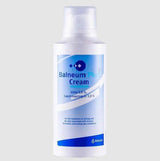




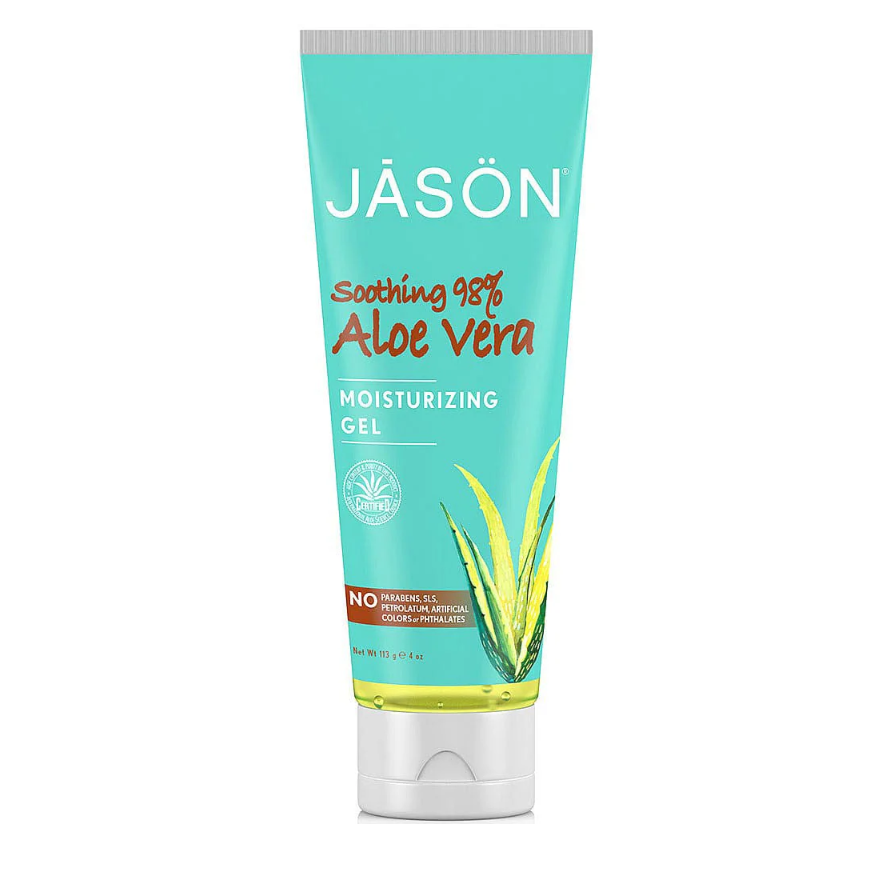
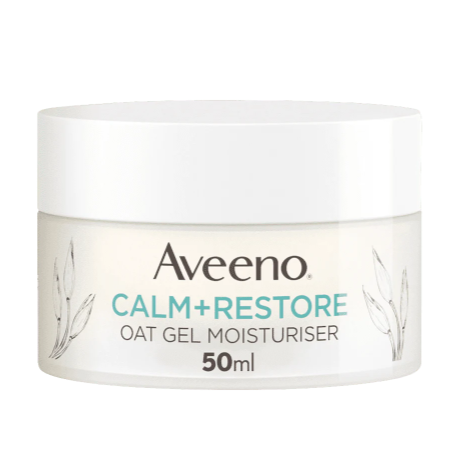
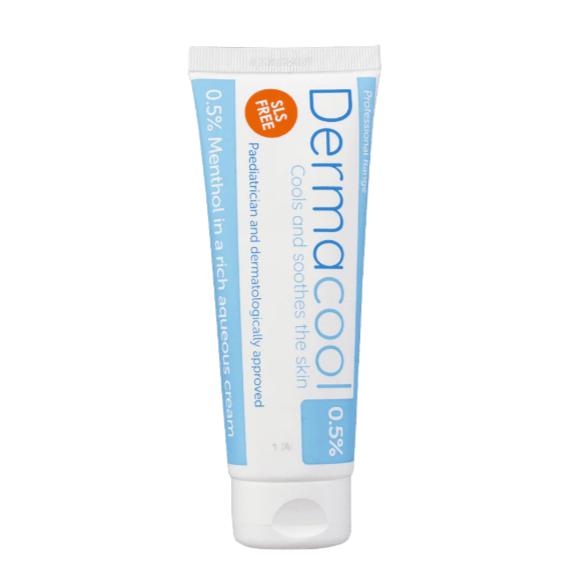
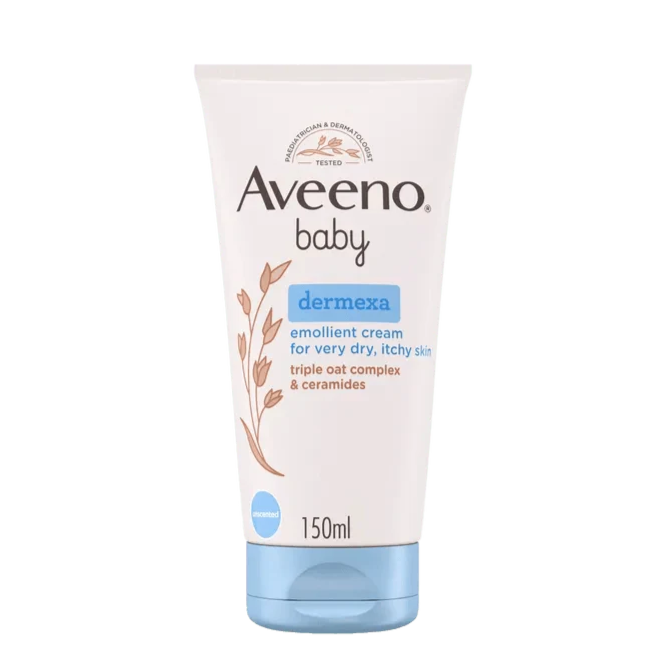
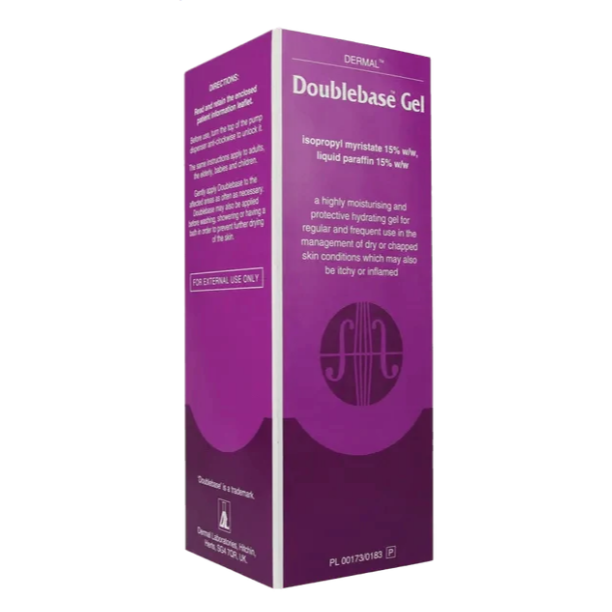


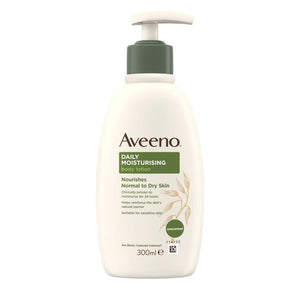





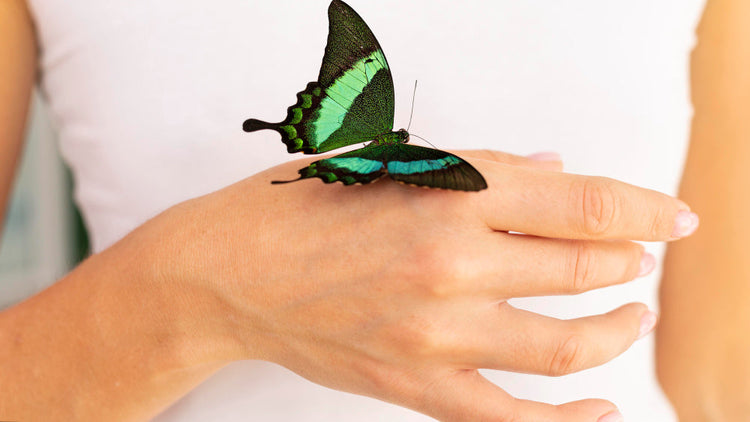
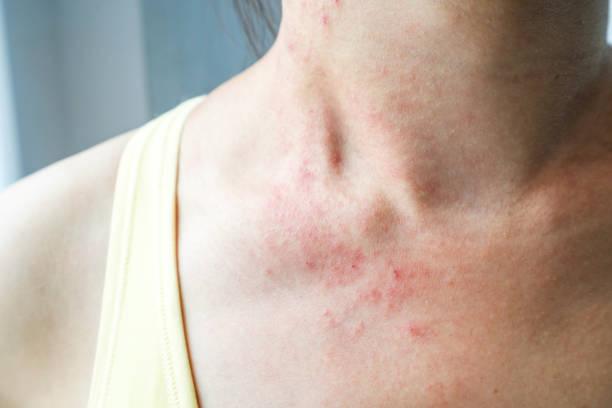

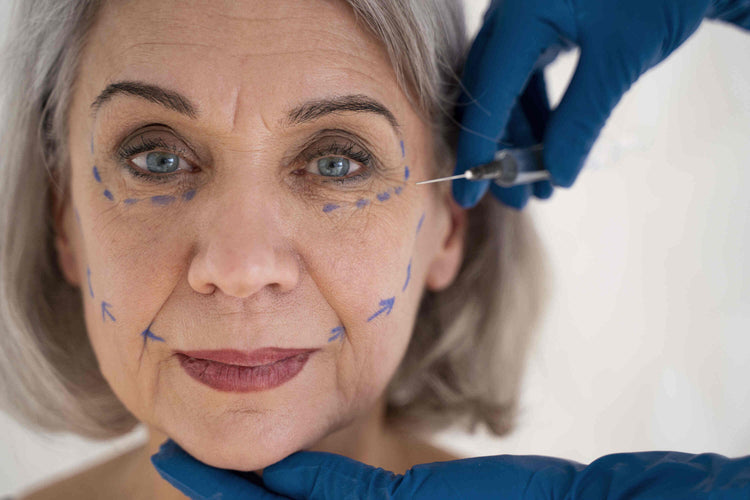


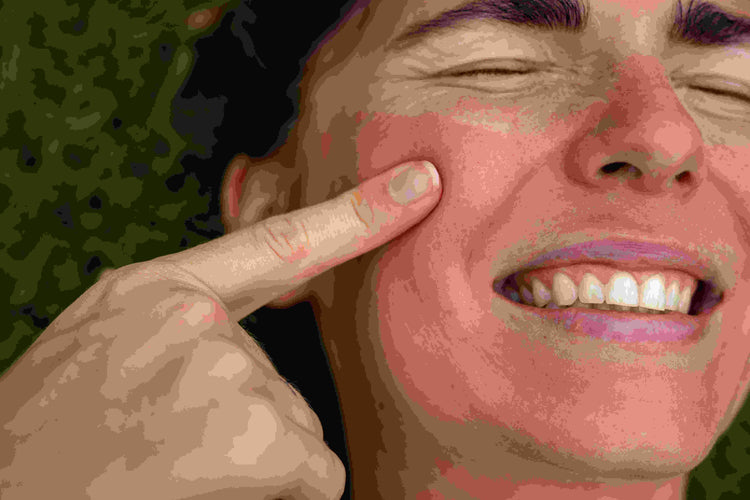

 Rated Excellent by 26,523+ Reviews
Rated Excellent by 26,523+ Reviews